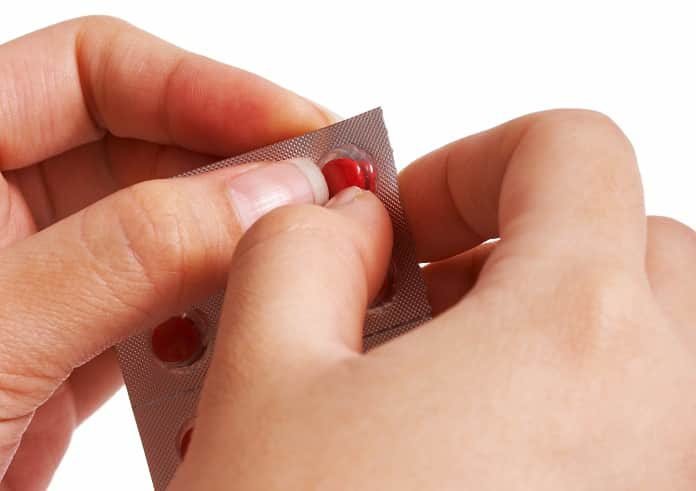In a 2017 study, researchers explored the risks and benefits of levothyroxine for subclinical hypothyroidism treatment in older adults. The findings suggest levothyroxine does not improve hypothyroidism symptoms.
Hypothyroidism – underproduction of the thyroid hormone thyroxine and compensatory overproduction of the pituitary hormone which promotes its release, thyroid-stimulating hormone (TSH) –can have profound effects on digestion, metabolism, muscle function, and memory, among other processes. Subclinical hypothyroidism, for which levels of thyroxine may not fall below the normal lower limit and the hallmark symptoms of hypothyroidism – such as weight gain, fatigue, hair loss, memory loss, or sensitivity to cold and heat – are not always present, is believed to be a contributing factor in a number of conditions affecting older adults. Evidence is currently limited concerning the safety and efficacy of thyroxine replacement therapy in these patients.
In a recent trial published in the New England Journal of Medicine, researchers explored the safety and efficacy of levothyroxine (synthetic thyroxine) for subclinical hypothyroidism treatment. Otherwise healthy patients aged 65 and older with a 3-month to 3-year history of subclinical hypothyroidism(TSH levels between 4.60 and 19.99 mIU/L and free thyroxine levels between 0.7 and 1.9 ng/dL) were recruited for the study. Those undergoing hypothyroidism therapy were excluded. Patients were separated with respect to country, age, and sex, and randomly assigned to receive 50 μg of levothyroxine (25 μg in patients with coronary heart disease or under 50 kg) or a placebo for 12 months. Doses were altered as required to obtain TSH levels between 0.40 and 4.59 mIU/L. Efficacy was assessed with respect to thyroid symptoms- and tiredness-related quality of life (ThyPRO, scored from 0 to 100), general thyroid-related quality of life (ThyPRO-39, from 0 to 100), general quality of life (EQ-5D questionnaire, scored from -0.59 to 1.00), the ability to perform activities of daily living (Barthel score, from 0 to 20; IADL score, 0 to 14), hand grip strength, cognitive function, physical examination, and the prevalence of fatal and non-fatal cardiovascular events.Safety was assessed with respect to adverse events – especially irregular heart rhythms, heart failure, osteoporosis, or bone fracture – and the symptoms component of a patient’s ThyPRO score. Patients were to be followed-up for 1-3 years after treatment.
In total, 737 patients were included in the study: 368 assigned to receive levothyroxine and 369 assigned to receive a placebo. The average age was 74.4 years and 396 (53.7%) of the participants were women. On the ThyPRO scale, 199 (27.0%) of 737 scored a 0 on the symptomatic component and 64 (8.7%) on the tiredness component. Follow-up lasted at least 12 months for 332 (90.2%) of the 368 levothyroxine patients and 337 (91.3%) of the 369 placebo patients, who in turn comprised the main analysis group. The extended analysis group, who were followed up for more than 12 months, included 194 levothyroxine patients and 187 placebo patients; after 1 year, 28 of these levothyroxine patients and 28 of these placebo patients had discontinued their respective treatments but were still monitored.
At the beginning of the trial (baseline), TSH levels were 6.4 mIU/L on average. At 6-8 weeks of treatment, TSH levels were 2.29 mIU/L lower in the levothyroxine group than in the placebo group. At 12 months, levels were 1.92 mIU/L lower. In the subset of patients for whom free thyroxine levels were measured, free thyroxine levels were 0.2 ng/dL higher in the levothyroxine group than in the placebo group at both 6-8 weeks and at 12 months.There were no significant differences in symptomatic scores(16.6 vs. 16.7), tiredness scores (28.7 versus 28.6), or the change in either ThyPRO measure relative to baseline at 12 months. In the extended analysis, however, levothyroxine patients scored 3.49 points lower on tiredness than placebo patients.
At 12 months, EQ-5D scores were 0.025 points lower for the levothyroxine group than for the placebo group. In the extended analysis, however, levothyroxine patients scored 0.04 points higher than placebo patients. No significant differences were observed between groups for other efficacy measures. Levothyroxine patients were 0.89 times as likely to experience a cardiovascular event, 1.91 times as likely to die from any cause, 0.94 times as likely to experience serious adverse events (0.80 and 1.06 times as likely for irregular heart rhythms or bone fracture) and 1.06 times as likely to withdraw from treatment as placebo patients.
Overall, the findings suggest that the use of levothyroxine for subclinical hypothyroidism treatment in older adults does not significantly improve symptoms over placebo use. Similarly, levothyroxine patients were not significantly spared from adverse events. The authors note that though the target TSH range reflects current clinical standards for older patients, some experts recommend a target range of 0.40 to 2.50 mIU/L. Further, as the majority of participants had baseline TSH levels below 10 mIU/L and had low symptomatic scores, future research may benefit from a more diverse study population with respect to these measures to determine their contribution to any potential benefit or harm caused by levothyroxine treatment. Stratifying patients with respect to the suspected cause of hypothyroidism – such as pituitary dysfunction, certain medications, or the autoimmune disease Hashimoto’s Thyroiditis – may also help identify populations for whom levothyroxine treatment may be beneficial.
Written by Raishard Haynes, MBS
Slott, D.J. et al. (2017). Thyroid Hormone Therapy for Older Adults with Subclinical Hypothyroidism. N Engl J Med, 376: 2534-2544. DOI: 10.1056/NEJMoa1603825



